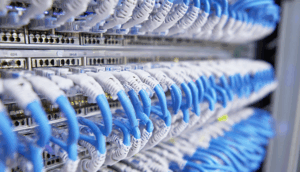CC-Link IE is a high-speed industrial Ethernet network protocol that’s designed for real-time communication between various automation devices. Its robustness and deterministic nature make it ideal for demanding applications in manufacturing, robotics, and other industrial settings. However, like any network, CC-Link IE’s performance can be significantly impacted by various factors. Understanding these factors and implementing appropriate optimization strategies is crucial for achieving optimal data transfer rates and ensuring the reliable operation of your industrial automation systems.
One of the primary factors affecting CC-Link IE data transfer is the physical layer infrastructure. The quality of the cabling, connectors, and termination resistances directly influences signal integrity. Using certified CC-Link IE-compatible cables and connectors from reputable manufacturers is paramount. These cables are specifically designed to meet the stringent requirements of the protocol, minimizing signal attenuation and interference. Regular inspections and maintenance of the physical layer are essential to identify and address any potential issues, such as damaged cables or loose connections. Shielded cables are particularly important in environments with high levels of electromagnetic interference (EMI), as they protect the signal from external noise. Proper grounding of the shielding is critical for its effectiveness. Incorrect grounding can actually exacerbate EMI problems, so it’s essential to follow manufacturer’s recommendations and industry best practices.
Network topology plays a crucial role. CC-Link IE supports various topologies, including line, star, and ring. The choice of topology depends on the specific application requirements and the physical layout of the system. A ring topology provides redundancy, ensuring continued operation even if one cable is broken. However, ring topologies can introduce latency if not properly configured. Star topologies offer centralized management and easier troubleshooting, but a failure at the central hub can disrupt the entire network. Line topologies are simple to implement but can be susceptible to single points of failure. Understanding the trade-offs between these topologies and selecting the most appropriate one for your specific needs is vital. Furthermore, minimizing the total cable length and the number of devices on a single network segment can help reduce latency and improve overall performance. Network segmentation, where large networks are divided into smaller, more manageable segments, can also enhance performance and improve fault isolation.

Beyond the physical layer, the configuration of the CC-Link IE network parameters significantly impacts data transfer rates. The cycle time, which determines how often data is exchanged between devices, is a critical parameter. A shorter cycle time allows for faster updates and improved responsiveness, but it also increases the network load. It’s important to strike a balance between cycle time and network utilization to avoid overloading the network. The data link layer protocol, which handles the exchange of data packets, also plays a crucial role. CC-Link IE uses a token-passing mechanism, where a token is passed from device to device, granting each device the opportunity to transmit data. Optimizing the token rotation time and the size of the data packets can improve data throughput. Careful consideration of the application’s real-time requirements is essential when configuring these parameters.
Finally, efficient programming practices are essential for maximizing data transfer performance. Minimize the amount of data transmitted over the network by only sending necessary information. Use data compression techniques to reduce the size of data packets. Avoid unnecessary delays in the application code that could slow down data processing. Regular profiling of the application code can help identify bottlenecks and areas for optimization. Employing techniques like data buffering and asynchronous communication can further enhance data transfer efficiency. By addressing these various aspects of CC-Link IE data transfer, engineers and system integrators can ensure the reliable and efficient operation of their industrial automation systems, leading to improved productivity and reduced downtime. Proper network monitoring and diagnostics are also important for proactively identifying and resolving potential performance issues before they impact operations.
